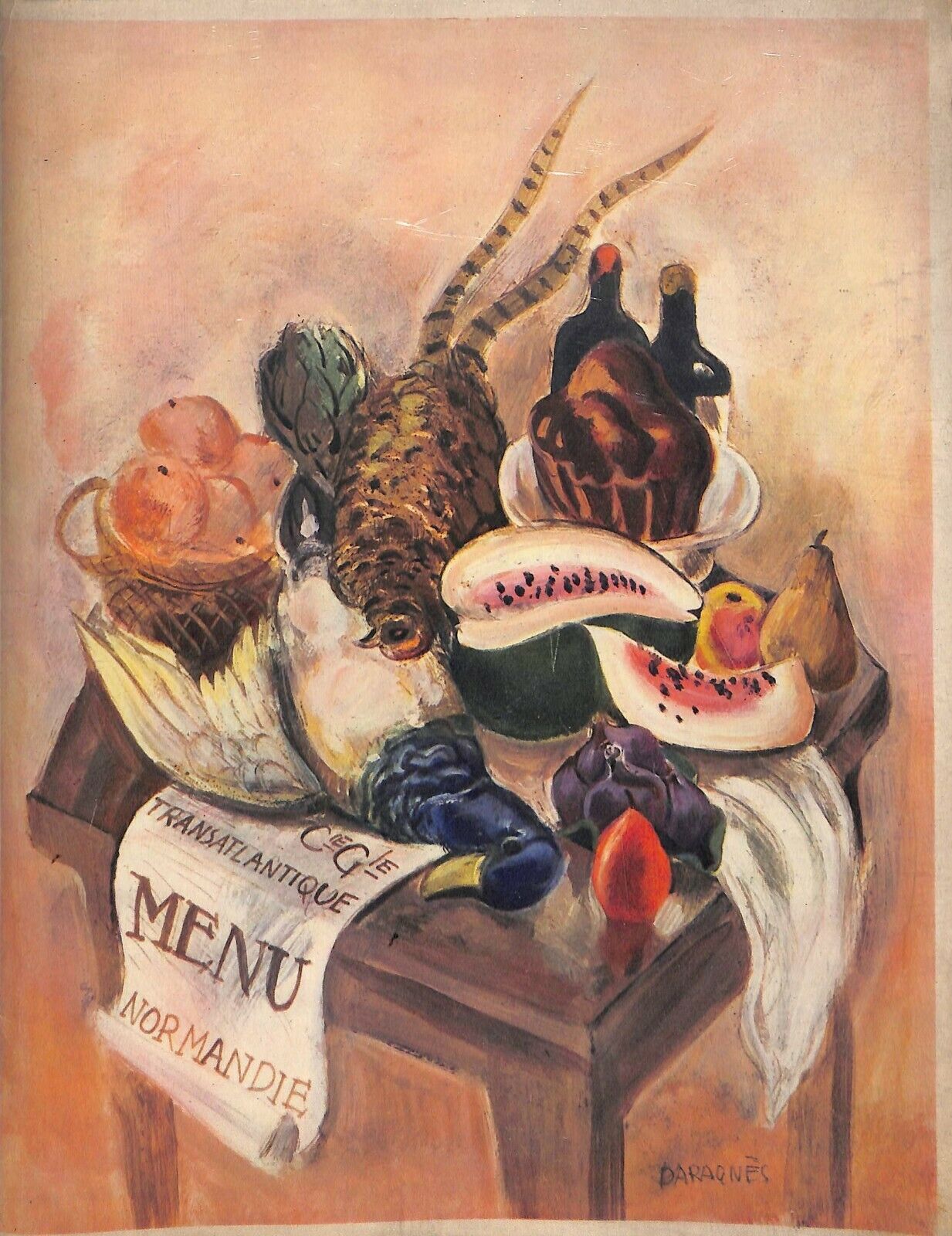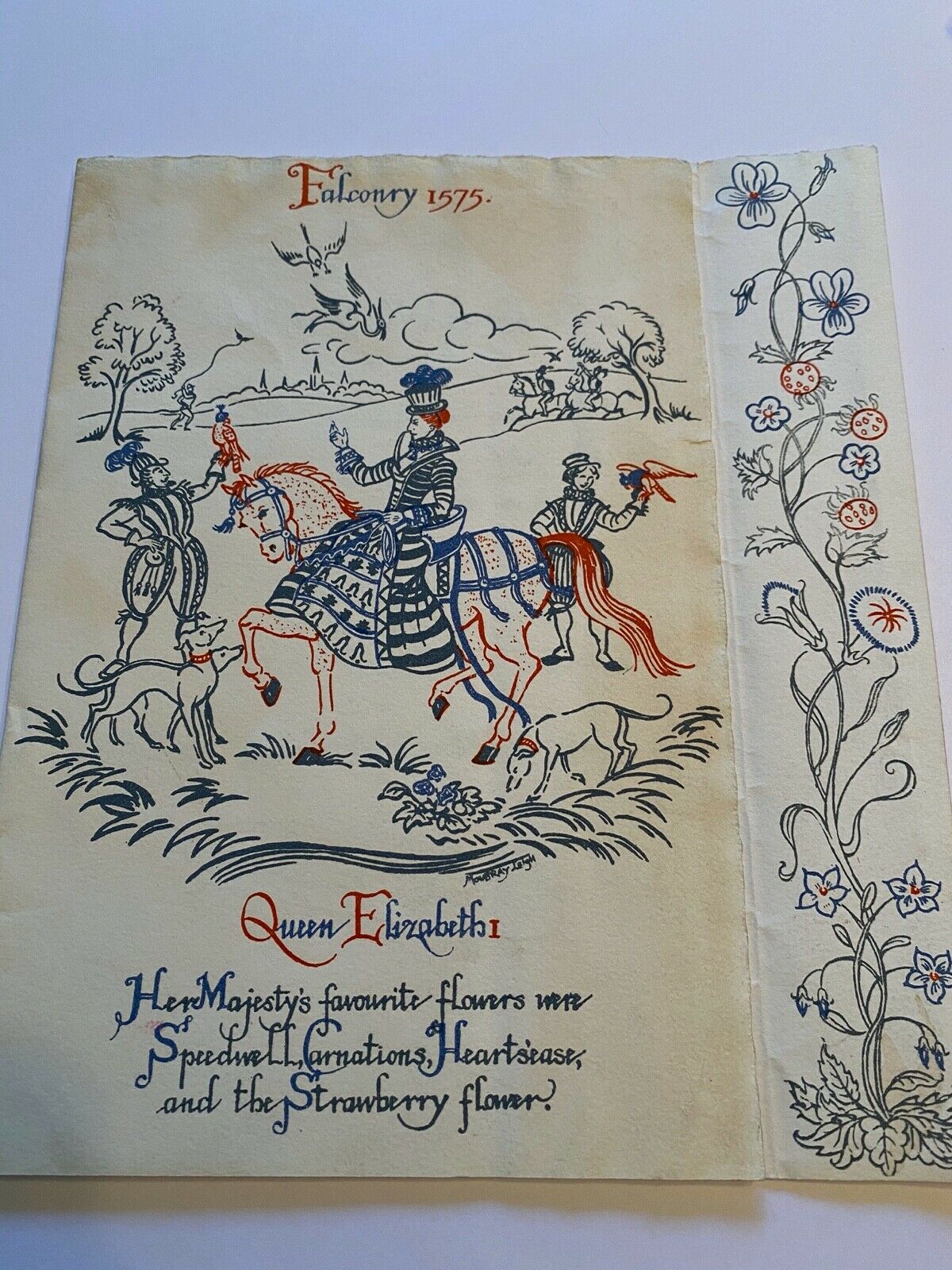-40%
"S.S. "Normandie" Set of 10 c1935 Transatlantique Menus"
$ 264
- Description
- Size Guide
Description
11.5" x 9"Editions Atlantique
w/ 10 menus in folio
The SS Normandie was a French ocean liner built in Saint-Nazaire, France, for the French Line Compagnie Générale Transatlantique (CGT). She entered service in 1935 as the largest and fastest passenger ship afloat, crossing the Atlantic in a record 4.14 days, and remains the most powerful steam turbo-electric-propelled passenger ship ever built.
Normandie's novel design and lavish interiors led many to consider her the greatest of ocean liners.
The CGT commissioned artists to create posters and publicity for the liner. One of the most famous posters was by Adolphe Mouron Cassandre, another Russian emigrant to France. Another poster, by Albert Sébille, showed the interior layout in a cutaway diagram fifteen feet long. This poster is displayed in the Musée national de la Marine in Paris.
Interior
Normandie's luxurious interiors were designed in Art Déco and Streamline Moderne style. Many sculptures and wall paintings made allusions to Normandy, the province of France for which the ship was named. Drawings and photographs show a series of vast public rooms of great elegance. Her voluminous interior spaces were made possible by having the funnel uptakes split to pass along the sides of the ship, rather than straight upward. French architect Roger-Henri Expert was in charge of the overall decorative scheme.
Most of the public space was devoted to first-class passengers, including the dining room, first-class lounge, grill room, first-class swimming pool, theatre and winter garden. The first-class swimming pool featured staggered depths, with a shallow training beach for children. The children's dining room was decorated by Jean de Brunhoff, who covered the walls with Babar the Elephant and his entourage.
The interiors were filled with grand perspectives, spectacular entryways, and long, wide staircases. First-class suites were given unique designs by select designers. The most luxurious accommodations were the Deauville and Trouville apartments, featuring dining rooms, baby grand pianos, multiple bedrooms, and private decks.
Normandie's main dining room, decorated with Lalique glass and compared to the Hall of Mirrors at Versailles.
Normandie's first-class dining hall was the largest room afloat. At 305 feet (93 m), it was longer than the Hall of Mirrors at the Palace of Versailles, 46 feet (14 m) wide, and 28 feet (8.5 m) high. Passengers entered through 20-foot-tall (6.1 m) doors adorned with bronze medallions by artist Raymond Subes. The room could seat 700 at 157 tables, with Normandie serving as a floating promotion for the most sophisticated French cuisine of the period. As no natural light could enter it was illuminated by twelve tall pillars of Lalique glass flanked by thirty-eight matching columns along the walls. These, with chandeliers hung at each end of the room, earned the Normandie the nickname "Ship of Light" (similar to Paris as the "City of Light").
A popular feature was the café grill, which would be transformed into a nightclub.[34] Adjoining the café grill was the first-class smoking room, which was paneled in large murals depicting ancient Egyptian life. The ship also had indoor and outdoor pools, a chapel, and a theatre which could double as a stage and cinema.
The machinery of Normandie's top deck and forecastle was integrated within the ship, concealing it and releasing nearly all the exposed deck space for passengers. As such it was the only ocean liner to have a regulation-sized open air tennis court on board.
Normandie carried distinguished passengers, including the authors Colette and Ernest Hemingway; the wife of French President Albert Lebrun; songwriters Noël Coward and Irving Berlin; and Hollywood celebrities such as Fred Astaire, Marlene Dietrich, Walt Disney, Douglas Fairbanks, Jr, and James Stewart. She also carried the von Trapp family singers of The Sound of Music from New York to Southampton in 1938, and from Southampton, the family went to Scandinavia for a tour before returning to the U.S.




















